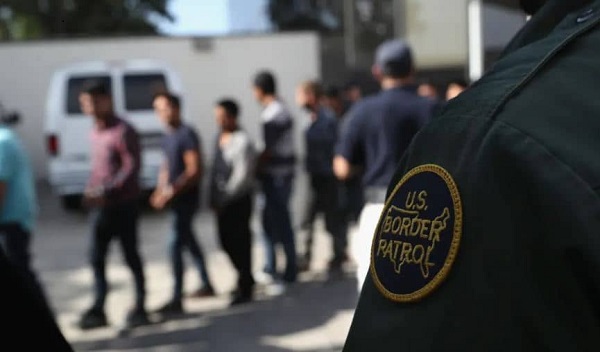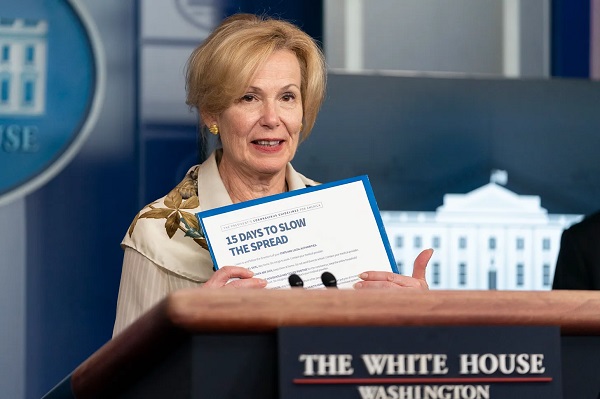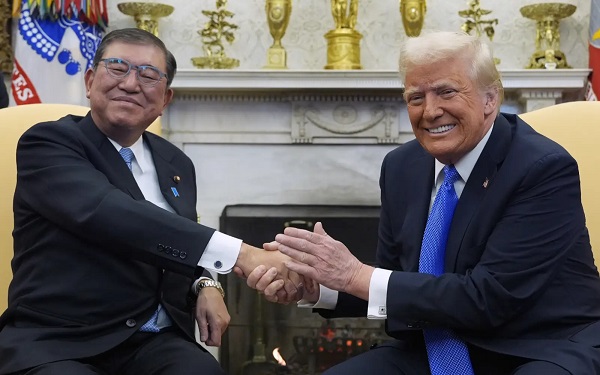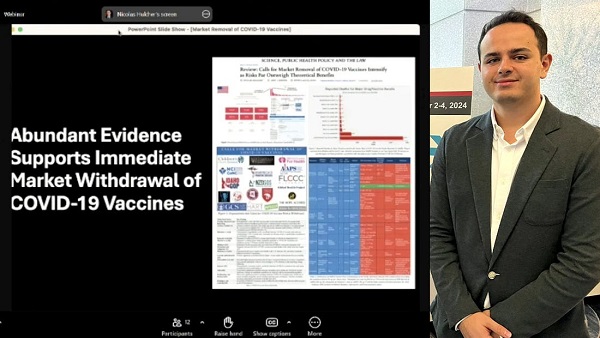conflict
Israel Dropped 8 Tons Of Explosives, Killing Dozens Of Civilians In Bid To Kill Hamas Leader
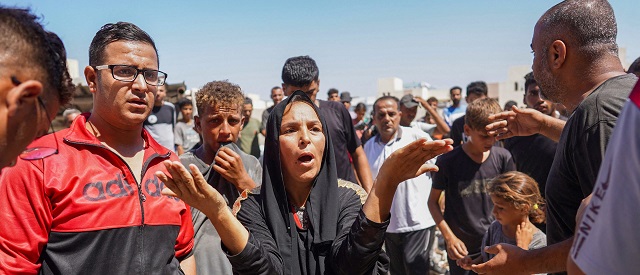
Palestinians react at the site of a damaged house that was hit in Israeli bombardment on Khan Yunis in the southern Gaza Strip on July 16, 2024, amid the ongoing conflict in the Palestinian territory between Israel and Hamas. (Photo by BASHAR TALEB/AFP via Getty Images)
 From the Daily Caller News Foundation
From the Daily Caller News Foundation
After years of hunting a top Hamas terrorist, Israeli forces dropped a massive payload of bombs on his suspected location Saturday and killed a large number of civilians in the process, The Wall Street Journal reported.
The Israeli air force dropped the eight 2,000-pound bombs on a compound in southern Gaza in an attempt to kill Hamas’ top military leader, Mohammed Deif, killing dozens of civilians in the process, according to the WSJ. Israel had tried and failed seven times to kill Deif prior to its most recent attack, and, though military officials are still investigating the bomb site, they are confident Deif is dead.
“I witnessed some of the most horrific scenes I have seen in my nine months in Gaza,” Scott Anderson, Gaza-based director of the United Nations Relief and Works Agency, told the WSJ. Gaza health authorities, which are controlled by Hamas and typically don’t distinguish between civilian and military casualties, say that more than 90 people were killed and 300 were wounded in the bombing, including women and children.
Israeli officials claim they killed several Hamas members in the strike, the WSJ reported. Hamas denies that Dief died in the bombing. (RELATED: IDF Claims Over 100 Hamas Fighters Killed After Wrapping Up Operation In Terrorist Stronghold)
Israeli officials believe Deif was a major player in orchestrating the Oct. 7 terrorist attacks that killed 1,200 people in Israel, according to the WSJ.
The area surrounding the compound was home to a market, a water source and a soup kitchen serving refugees, according to the WSJ. Israeli forces acknowledged that the area they bombed was inhabited by civilians, though they blamed the casualties on Hamas for hiding among the people.
President Joe Biden froze the shipment of 2,000-pound bombs to Israel in May over concerns about the collateral damage they can cause, though the United States is still sending 500-pound bombs, The Times of Israel reported. “Civilians have been killed in Gaza as a consequence of those bombs and other ways in which they go after population centers,” Biden told CNN in an interview, referring to the 2,000-pound munitions.
Mahmoud Abu Amer, who was roughly 100 yards away from the bomb site, described the explosion as “like a fiery belt” and said that he “saw people falling in front of me,” according to the WSJ.
The Israeli Ministry of Defense did not immediately respond to the Daily Caller News Foundation’s request for comment. The Israeli Defense Forces referred the DCNF to the nation’s public diplomacy desk, which also did not return a request for comment.
conflict
Hamas, Palestinians paraded dead babies coffins through streets before handover to Israel
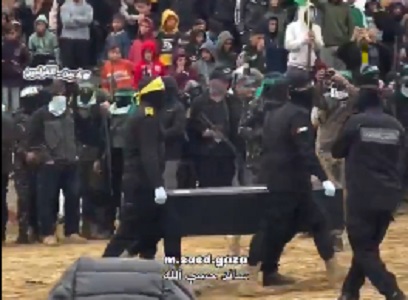
 MxM News
MxM News
Quick Hit:
Hamas paraded the caskets of Israeli hostages, including what they claimed were the bodies of a mother and two young children, through the streets of Gaza before handing them over to the Red Cross. Videos show crowds cheering as armed terrorists carried the coffins as part of a prisoner exchange with Israel.
Key Details:
- Videos from Khan Younis, Gaza, show Hamas and other terrorists parading four caskets, including those of two young children, before handing them to the Red Cross.
- Crowds cheered as the terrorists, armed and unmasked, carried the coffins, with celebratory music playing in the background.
- The deceased were identified as members of the Bibas family, including the youngest hostages from the October 7 attack.
ANIMALS: Hamas paraded the bodies of murdered Israeli babies in coffins while blasting loud music during their celebration today when they handed the bodies over to the Red Cross. pic.twitter.com/CoTV5Rzep7
— Breaking911 (@Breaking911) February 20, 2025
Diving Deeper:
During a ceremony in Khan Younis, Gaza, Hamas paraded the caskets of Israeli hostages through the streets, including what they claimed were the bodies of a mother and her two small children. The display occurred before the remains were handed over to the Red Cross as part of a prisoner exchange agreement with Israel. Crowds of Gazans were seen cheering and celebrating as the coffins were carried by armed terrorists.
Videos from the event show masked militants loading a casket into a Red Cross aid truck, while another militant, adorned with symbols of Palestinian Islamic Jihad, filmed the procession. Another video shows adults and children waving and celebrating as Hamas fighters, armed and in trucks, paraded through the streets. Reuters footage also captured members of the Popular Front for the Liberation of Palestine (PLFP) helping carry a casket, highlighting the involvement of multiple terrorist factions in the display.
Hamas presented the bodies as those of the Bibas family, who were captured during the October 7 attack. The children, aged four years and less than one year, were among the youngest hostages taken during the brutal assault that triggered the ongoing 15-month conflict. The fourth body was identified as 83-year-old Oded Lifshitz, according to Jewish News Syndicate. Hamas has repeatedly blamed the deaths on Israeli airstrikes, though no evidence was provided to support the claim.
Israel and Hamas are currently observing a temporary ceasefire agreement, facilitating the exchange of civilian hostages for Palestinian prisoners. Despite the ceasefire, Hamas has continued to celebrate the October 7 attacks, which resulted in the largest mass killing of Jewish people since the Holocaust. During the ceremony, a stage displayed a poster depicting Israel as a “Nazi Army,” underscoring Hamas’s longstanding agenda of hostility towards the Jewish state.
The shocking parade of caskets, accompanied by celebratory music and cheering crowds, has drawn international condemnation and further underscored the brutal nature of Hamas’s actions. As the exchange process continues, the emotional toll on the families of the victims remains immeasurable.
armed forces
SecDef Hegseth picks investigators to examine botched Afghanistan withdrawal
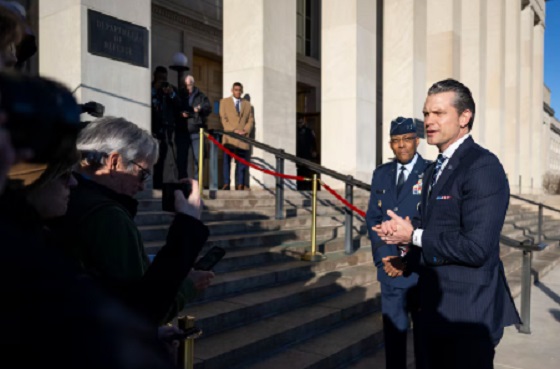
 MxM News
MxM News
Quick Hit:
Defense Secretary Pete Hegseth has initiated an investigation into the Biden administration’s botched Afghanistan withdrawal. Hegseth confirmed that investigators have already been selected to examine the disastrous exit, which left 13 U.S. service members dead and stranded Americans behind. He emphasized that accountability is forthcoming and vowed a thorough review to uncover the decision-making failures behind the debacle.
Key Details:
- Hegseth told Breitbart News that he has already chosen investigators for a full Pentagon-led review of the withdrawal.
- The Biden administration’s 2021 exit resulted in the deaths of 13 U.S. service members, abandoned American citizens, and a botched drone strike that killed an Afghan aid worker and his family.
- No officials were held accountable, while Marine Col. Stuart Scheller, who publicly called for accountability, was the only one punished—he now serves in the Trump administration.
Diving Deeper:
Hegseth, in an exclusive interview, stated that the investigation would be comprehensive, focusing on key decision-making failures that led to one of the most disastrous military withdrawals in U.S. history. While no specific timeline was provided, he stressed the importance of getting the facts right.
The 2021 Afghanistan withdrawal, executed under then-President Joe Biden, resulted in a chaotic evacuation at Kabul International Airport. The suicide bombing at Abbey Gate claimed the lives of 13 American troops, while the administration abandoned hundreds of U.S. citizens despite claiming success. Additionally, the U.S. military, in a hasty attempt to prevent another attack, launched a drone strike that mistakenly killed an innocent Afghan aid worker and his family. At the time, then-Joint Chiefs Chairman Mark Milley defended the strike as “righteous.”
Despite these failures, no senior officials were removed from their posts. The only individual who faced consequences was Marine Col. Stuart Scheller, who was discharged after demanding accountability in a viral video. Now, he serves as a senior adviser to the Defense Under Secretary for Personnel and Readiness under the 47th President, Donald Trump.
Hegseth reaffirmed his commitment to ensuring accountability, emphasizing the need to establish a factual timeline of events, decisions, and their consequences. “I don’t think there’s anybody that feels like there’s been an honest accounting of what happened in Afghanistan. That’s our job,” he said.
The investigation, he added, will be critical to rebuilding trust within the Defense Department. “We’re going to drive that full investigation and get a sense of what happened. Accountability will be coming,” Hegseth concluded.
-
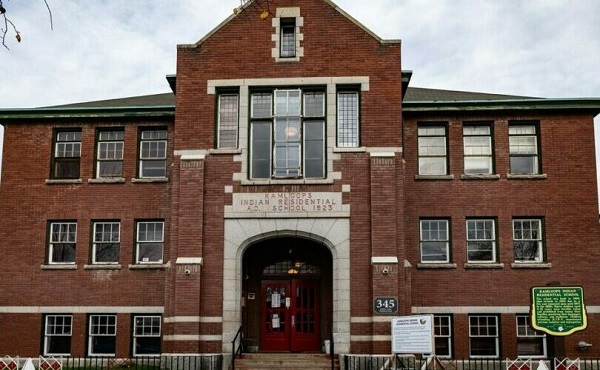
 Indigenous20 hours ago
Indigenous20 hours agoTrudeau gov’t to halt funds for ‘unmarked graves’ search after millions spent, no bodies found
-

 Censorship Industrial Complex2 days ago
Censorship Industrial Complex2 days agoBipartisan US Coalition Finally Tells Europe, and the FBI, to Shove It
-

 Business1 day ago
Business1 day agoFederal Heritage Minister recommends nearly doubling CBC funding and reducing accountability
-
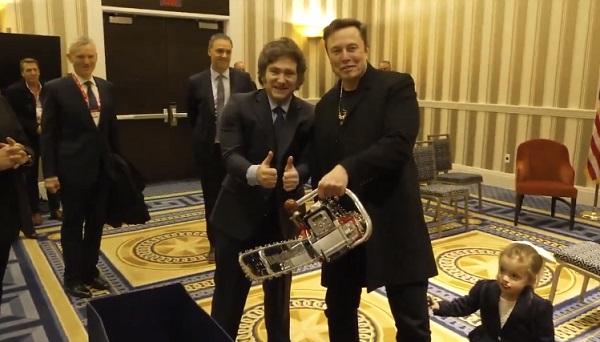
 Business1 day ago
Business1 day agoArgentina’s Javier Milei gives Elon Musk chainsaw
-
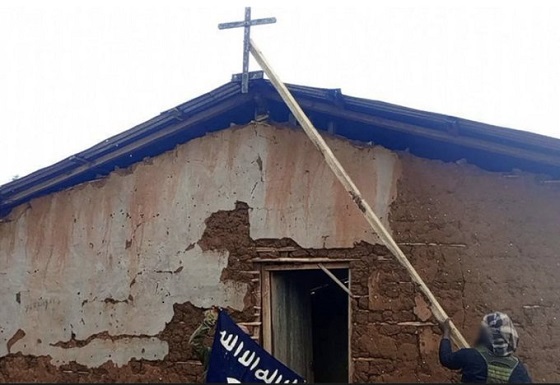
 International1 day ago
International1 day agoJihadis behead 70 Christians in DR Congo church
-
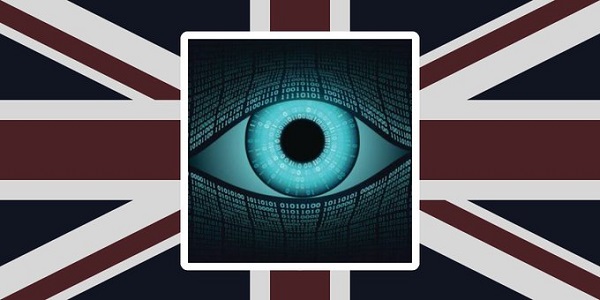
 Business19 hours ago
Business19 hours agoApple removes security feature in UK after gov’t demands access to user data worldwide
-
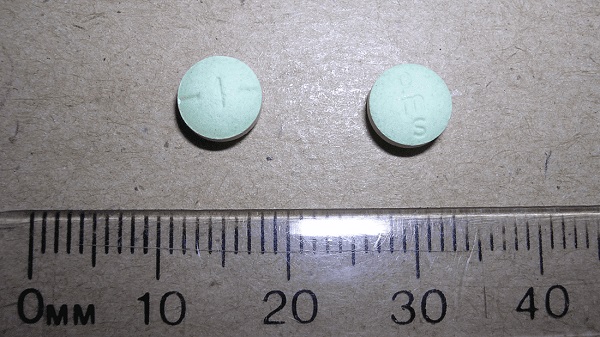
 Addictions1 day ago
Addictions1 day agoBC overhauls safer supply program in response to widespread pharmacy scam
-

 Business2 days ago
Business2 days agoNew climate plan simply hides the costs to Canadians

